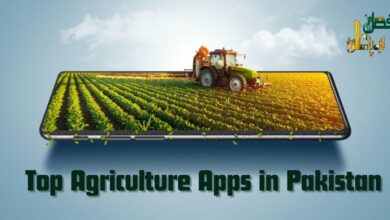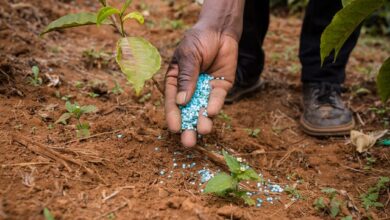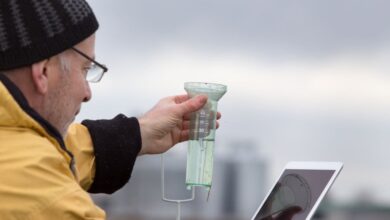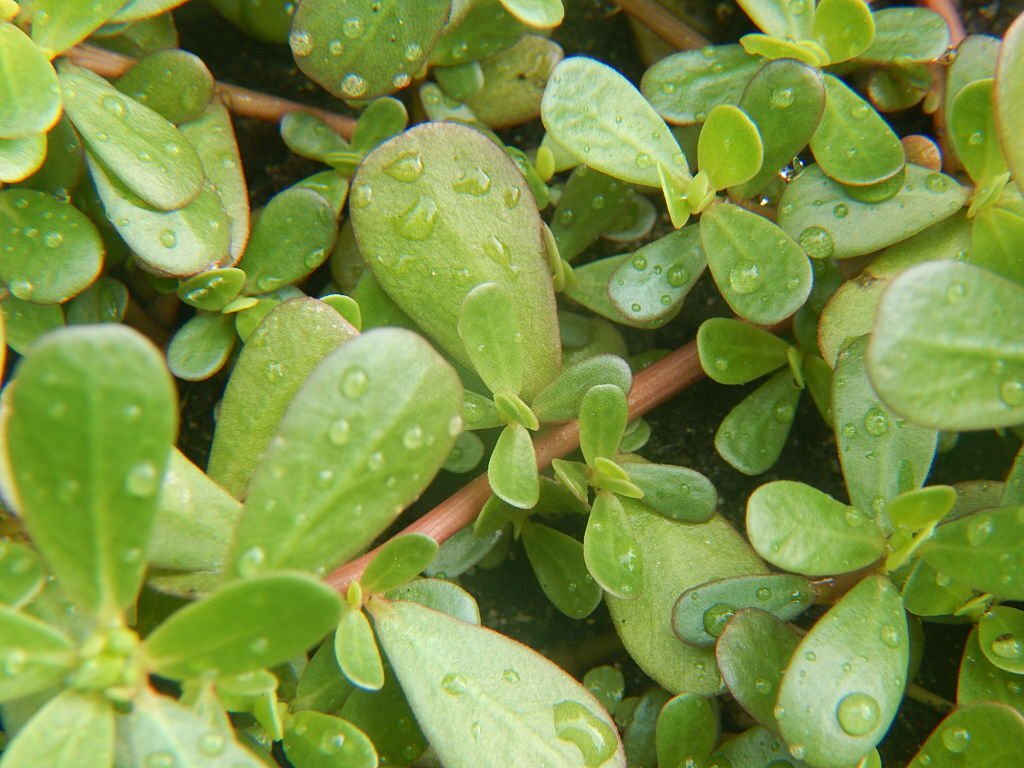Future of Farming Technology: Smart Solutions Reshaping Agriculture in 2025

The future of farming technology is evolving at a remarkable pace, with the global digital agriculture market projected to grow 9.17% year-over-year from 2022 to 2030. We’re witnessing unprecedented adoption rates, as 61% of North American farmers now use digital agronomy tools, while 51% have implemented precision agriculture hardware. However, challenges remain significant—41% of farmers identified weather risks and climate events as their top profit concern in 2024, up from 35% in 2022.
These statistics highlight why farming innovations are becoming increasingly crucial. Automation and control systems specifically are growing at an impressive 10.55% year-over-year rate. Additionally, the farm management systems segment is projected to grow at a 16.97% CAGR, demonstrating strong demand for better agricultural management solutions. Despite these advances, the 2025 edition of World FIRA revealed a persistent gap between innovative prototypes and practical, affordable solutions in agricultural robotics. This disconnect represents both a challenge and an opportunity for new farming technologies that can bridge theoretical capabilities with on-the-ground farming realities. In this article, we’ll explore the most promising Farming Technology advancements reshaping farming in 2025 and beyond.
AI and Data-Driven Farming Technology in 2025
AI in agriculture is experiencing unprecedented growth, with the market projected to expand from $1.70 billion in 2023 to $4.70 billion by 2028. This rapid advancement is reshaping how farmers analyze data and make critical decisions in 2025.
Generative AI for Real-Time Crop Insights
Generative AI has evolved from simple chatbots to sophisticated AI agents powered by Large Language Models (LLMs) that engage in conversations, complete tasks, and demonstrate autonomous behavior. These systems transform vast datasets into actionable insights, enabling farmers to optimize productivity and sustainability. In 2025, advanced platforms using generative AI are unlocking real-time insights from field data, consequently empowering agronomists to accelerate decision-making. Furthermore, these AI tools can analyze real-time data using sensors and cameras to assess plant health, monitor irrigation levels, and prevent disease spread.
Predictive Analytics for Yield Forecasting
Predictive analytics represents one of the most significant farming innovations of 2025. Machine learning algorithms now process historical data alongside real-time information to forecast:
- Disease outbreaks and equipment failures with remarkable accuracy
- Weather patterns and crop stress to mitigate issues proactively
- Optimal planting and harvesting times to reduce crop losses
The Farming Technology has matured significantly, with Random Forest regression models demonstrating superior performance for yield prediction, followed by K-nearest neighbors and decision tree regression. Notably, these models analyze multiple variables including weather patterns, soil conditions, and management practices to optimize yields. Root Mean Square Error (RMSE) has emerged as the most commonly used evaluation parameter for these systems.
AI-Powered Decision Support Systems for Agronomists
Decision Support Systems (DSS) have become essential tools for agronomists in 2025. These comprehensive systems typically offer features including field mapping, record keeping, equipment tracking, inventory management, and financial analysis. Advanced platforms now incorporate AI to help forecast yields, anticipate pest pressure, and optimize resource allocation. In fact, studies show AI algorithms can save up to 27.6% of water and 57% of energy compared to conventional practices.
Despite their benefits, adoption barriers remain—including cost concerns, knowledge gaps, data security issues, and confidence in recommendations. As a result, development efforts now focus on user-friendly interfaces and transparent data policies to increase farmer trust in these agricultural technology advancements.
Automation and Robotics in Field Operations
Robotics adoption in field operations is revolutionizing traditional farming practices, with autonomous equipment handling increasingly complex tasks across farms worldwide. This shift addresses critical agricultural challenges including labor shortages, operational efficiency, and environmental sustainability.
Autonomous Tractors for Precision Seeding
Autonomous tractors have evolved from basic GPS guidance to fully self-operating systems. John Deere’s autonomous tractors utilize sixteen advanced cameras providing 360-degree vision that can detect objects and triangulate distance. These machines process every pixel of every image in approximately 100 milliseconds, using artificial intelligence to determine safe driving areas. Farmers can monitor operations remotely through mobile applications, receiving alerts if the tractor encounters obstacles or mechanical issues. Raven’s Driverless Tillage Solution similarly combines autonomous tractor platforms with tillage automation, allowing operators to either manage operations remotely or handle other duties while sitting in the tractor. Both systems enable farmers to maximize productivity during tight weather windows and overcome labor constraints.
Weeding Robots with Computer Vision
Modern weeding robots employ sophisticated computer vision and AI to distinguish between crops and weeds with remarkable precision. Carbon Robotics’ LaserWeeder uses deep learning Farming Technology to identify weeds and eliminate them using targeted laser beams. Moreover, this approach can reduce herbicide usage by up to 95% compared to conventional spray systems. FarmWise’s Vulcan implements precision weeding through computer vision, addressing key challenges in weed management while saving farmers approximately $250 per acre. Essentially, these robotic weeders integrate four key technologies: observation systems for weed detection, action components with specialized end-effectors, guidance systems for navigation, and mapping functions to track weed distribution.
Drone-Based Crop Monitoring and Spraying
The agricultural drone market is projected to reach $3.41 billion in 2025, growing at a compound annual rate of 38.3%. Primarily utilized for crop monitoring and chemical application, these unmanned aerial vehicles enable targeted treatments, consequently reducing chemical usage and environmental impact. Agricultural drones integrate high-precision GPS, sensors, and autonomous flight capabilities to maintain consistent spraying patterns. Equipped with multispectral and thermal cameras, drones can identify crop diseases and stress in early stages, often before symptoms are visible from ground level. Rather than traditional methods, drone spraying reduces chemical application rates while improving coverage accuracy and worker safety by minimizing direct human handling of agricultural chemicals.
Digital Twins and Satellite Monitoring
Digital twin technology is emerging as a cornerstone of advanced agricultural systems in 2025, enabling unprecedented levels of field simulation and monitoring capabilities that were previously impossible.
Digital Twin Models for Soil and Weather Simulation
Digital twins create virtual replicas of physical farms, integrating data from soil sensors, satellite imagery, weather stations, and farm machinery to provide comprehensive agricultural ecosystem insights. These models simulate real-world scenarios to help farmers make informed decisions about irrigation, fertilization, and pest control. According to Texas A&M AgriLife Research, digital twins enhance crop production systems by empowering farmers to optimize planting schedules, resource allocation, and harvesting timing. Using AI-powered modeling, these systems translate massive datasets into actionable insights, ultimately reducing resource usage by up to 30% while increasing yields by as much as 20%.
Synthetic Data for Virtual Field Trials
Synthetic data generation has become instrumental for agricultural research and development. Scientists now create digital twins that maintain statistical correlations from real-world data while generating synthetic information to emulate real-life conditions. For instance, crop protection companies can create virtual field trials to test variables such as soil types and weather conditions before conducting actual experiments. This approach has significant implications for agricultural input suppliers who must manage large field trials for regulatory approval. Additionally, synthetic data helps fill gaps when equipment errors occur or remote sensors fail, thereby providing a complete picture of agricultural studies.
Satellite-Based Crop Health Monitoring with NDVI
Normalized Difference Vegetation Index (NDVI) has transformed how farmers monitor crop health from space. This measure of surface greenness provides an automated way to track crop progress throughout growing seasons. Key applications include:
- Early detection of water stress in drought-prone areas
- Precision nitrogen management based on vegetation health zones
- Year-to-year comparisons to identify consistently underperforming field areas
- Monitoring crop recovery following disasters like hailstorms
The Sentinel GreenReport Plus tool exemplifies this advancement, combining high-resolution imagery from the European Space Agency’s Copernicus Sentinel-2 satellites with climate datasets to deliver up-to-the-day insights into vegetation greenness and land cover changes.
Regenerative and Climate-Smart Farming Innovations
Regenerative agriculture represents a fundamental shift in farming philosophy, aiming to restore rather than merely sustain natural resources. This approach actively improves soil health, increases biodiversity, enhances ecosystem services, and captures carbon in soil—positioning it at the forefront of agricultural innovation in 2025.
Soil Carbon Sequestration Tracking via Remote Sensing
Soils represent one of Earth’s most important carbon sinks, holding more carbon than all vegetation and atmosphere combined. Currently, remote sensing technologies have evolved to monitor soil organic carbon (SOC) with remarkable precision. Sentinel satellite data combined with machine learning can predict SOC with an average error of less than 10% and an R² of 0.91 on mineral croplands. The Precision Sampling method utilizes spectral-temporal heterogeneity maps calculated from Sentinel-1 and Sentinel-2 images to optimize field monitoring. Indeed, studies show that farms employing regenerative practices could sequester nearly a billion tons of carbon dioxide globally each year. Global agricultural land under proper management could potentially store an additional 1.85 gigatons of carbon annually—equivalent to all the world’s transport-related emissions.
Tokenized Incentives for Regenerative Practices
Blockchain technology is transforming how farmers are rewarded for environmental services. Tokenized incentives directly link measurable environmental improvements with financial rewards. The global compliance carbon markets reached $850 billion in value by 2021, covering approximately one-fifth of global greenhouse gas emissions. Protocols like Toucan, Flowcarbon, and Nori are building Web3 carbon markets that improve liquidity and transparency in these systems. The AIRS project exemplifies this approach, using satellite remote sensing data with hybrid smart contracts to automatically reward land stewards who successfully regenerate targeted areas. These systems typically track improvements in soil health, carbon sequestration, vegetative cover, and hydrology improvements.
Climate-Resilient Crop Varieties and Forecasting Tools
Climate-resilient crops are primarily developed to withstand:
- Drought conditions (most prevalent trait in studies)
- Water stress (improved water-use efficiency)
- Early maturity (to adjust planting dates)
- Salinity and flooding tolerance
Prominent examples include China’s “seawater rice,” which yields up to 7.5 tons per hectare in saline-alkali soils, and IRRI’s flood-resistant rice varieties that survive submersion for up to 14 days, resulting in yield increases of 1-3 tons during 10-15 day floods. Altogether, farmers who accessed weather forecast systems planned better for farming activities, including choosing appropriate crop varieties. Agricultural extension, cited by 50% of studies as the most relevant factor for technology adoption, plays a crucial role in connecting farmers with climate-resilient solutions.
Conclusion
As we look toward 2025 and beyond, Farming Technology stands at a remarkable turning point. Throughout this article, we explored how digital transformation reshapes modern Farming Technology through several key innovations. AI-powered systems now deliver real-time crop insights while predictive analytics forecast yields with unprecedented accuracy. Additionally, autonomous equipment handles complex field operations, addressing labor shortages while enhancing operational efficiency.
Digital twin technology certainly represents one of the most significant advancements, creating virtual farm replicas that enable detailed simulations for optimized decision-making. Satellite monitoring systems equipped with NDVI capabilities provide farmers crucial data about crop health from space, therefore allowing early intervention when problems arise.
Perhaps most importantly, regenerative agriculture practices supported by Farming Technology offer hope for climate resilience. Soil carbon sequestration tracking, blockchain-based incentive systems, and climate-adaptive crop varieties together create pathways toward sustainable food production despite growing environmental challenges.
Challenges undoubtedly remain. The gap between cutting-edge prototypes and affordable, practical farm solutions persists as a significant hurdle. Weather risks and climate events continue to threaten farm profitability, consequently driving demand for more resilient systems.
Despite these obstacles, the statistics tell a compelling story—growing adoption rates across North America signal farmers’ willingness to embrace technology when it delivers tangible benefits. The projected growth rates for automation systems and farm management software further demonstrate agriculture’s digital future is well underway.
We believe the convergence of these technologies—AI, robotics, digital twins, satellite monitoring, and regenerative practices—will fundamentally transform how we grow food. This transformation comes at a critical time, when feeding a growing global population while protecting natural resources demands nothing less than a technological revolution in agriculture.
FAQs
Q1. What are the most promising agricultural technologies for 2025? The most promising agricultural technologies for 2025 include AI-powered systems for real-time crop insights, autonomous tractors for precision seeding, weeding robots with computer vision, drone-based crop monitoring and spraying, and digital twin models for soil and weather simulation.
Q2. How is artificial intelligence transforming farming practices? Artificial intelligence is revolutionizing farming by enabling data-driven decision-making, providing real-time crop insights, forecasting yields, optimizing resource allocation, and powering autonomous equipment. AI-driven tools are improving efficiency, sustainability, and productivity in agriculture.
Q3. What role do drones play in modern agriculture? Drones play a crucial role in modern agriculture by providing crop monitoring capabilities, enabling targeted chemical application, and identifying crop diseases and stress early. They help reduce chemical usage, improve coverage accuracy, and enhance worker safety by minimizing direct handling of agricultural chemicals.
Q4. How does regenerative agriculture contribute to climate resilience? Regenerative agriculture contributes to climate resilience by improving soil health, increasing biodiversity, enhancing ecosystem services, and sequestering carbon in soil. It employs practices that can be tracked via remote sensing and incentivized through tokenized systems, helping to mitigate climate change impacts on farming.
Q5. What are the challenges in adopting new farming technologies? Challenges in adopting new farming technology include the gap between innovative prototypes and practical, affordable solutions, weather risks and climate events threatening farm profitability, cost concerns, knowledge gaps, data security issues, and farmer confidence in AI-powered recommendations. Overcoming these barriers is crucial for widespread adoption of agricultural innovations.




